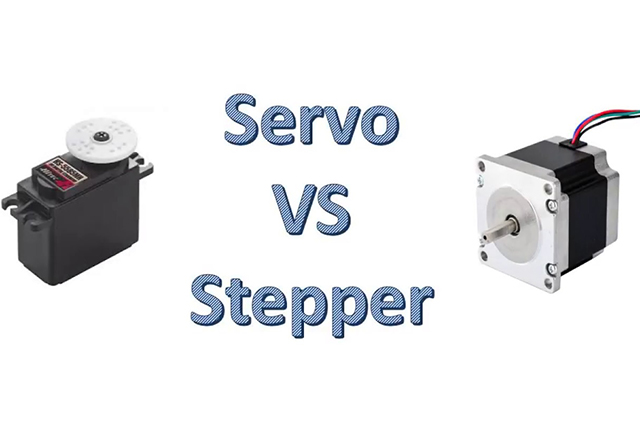
Selecting between a servo motor and a stepper motor can be quite a challenge involving the balancing of several design factors. Cost considerations, torque, speed, acceleration, and drive circuitry all play a role in selecting the best motor for your application.
Stepper motor are derived from the working concept of BLDC or Brush less DC Motors in which the rotating part the ROTOR (which is composed of permanent magnets) in most case cover the stationary part the STATOR which is composed of copper winding which is then excited to attract the rotor magnet in a specific pattern to make a BLDC rotate. This kind in called OUTRUNNER BLDC which usually shows high torque. While there are INRUNNER BLDC with Rotor inside stator(like common DC motor) which runs at high speed. It require a sophisticated control mechanism called ESC (Electronic Speed Control). All in all in case of BLDC rotor there must only be few Permanent Magnets. They are prefer for application with HIGH TORQUE OR HIGH SPEED(RPM).
Now Moving on to the servo motor. On most examples you see on internet you can find a regular DC motor inside a servo motor with some gears at output, either optical, electrical or magnetic rotary encoder (for feedback) and some electronic control circuitry“ALL INSIDE A SERVO MOTOR”. Also in some industrial application there are also Hydraulic based SERVOS too. The rotary encoder gives the feedback to a controller circuit about current position of rotor shaft of motor used and with these CLOSED LOOP FEEDBACK SYSTEM we can precisely control the VELOCITY, ACCELERATION AND POSITION of rotor. It has a circuitry inside the motor as explaination above and another control circuitry outside motor for giving proper control signal for servo to work on. Usually Pulse Width Modulated [PWM] signals are used to control their output parameters.
Stepper motors offer several advantages over servo motors beyond the larger number of poles and easier drive control. The design of the stepper motor provides a constant holding torque without the need for the motor to be powered. The torque of a stepper motor at low speeds is greater than a servo motor of the same size.
For applications where high speed and high torque is needed, servo motors shine. Stepper motors peak around speeds of 2,000 RPM, while servo motors are available many times faster. Servo motors also maintain their torque rating at high speed, up to 90%. Servo motors are also more efficient than stepper motors with efficiencies between 80-90%. A servo motor can supply roughly twice their rated torque for short periods, providing a well of capacity to draw from when needed. In addition, servo motors are quiet, available in AC and DC drive. And do not vibrate or suffer from resonance issues.
In short servo motor works with a encoder which makes it too much expensive but gives accuracy. So, there has been increasing popularity in closed loop stepper motors in recent years.